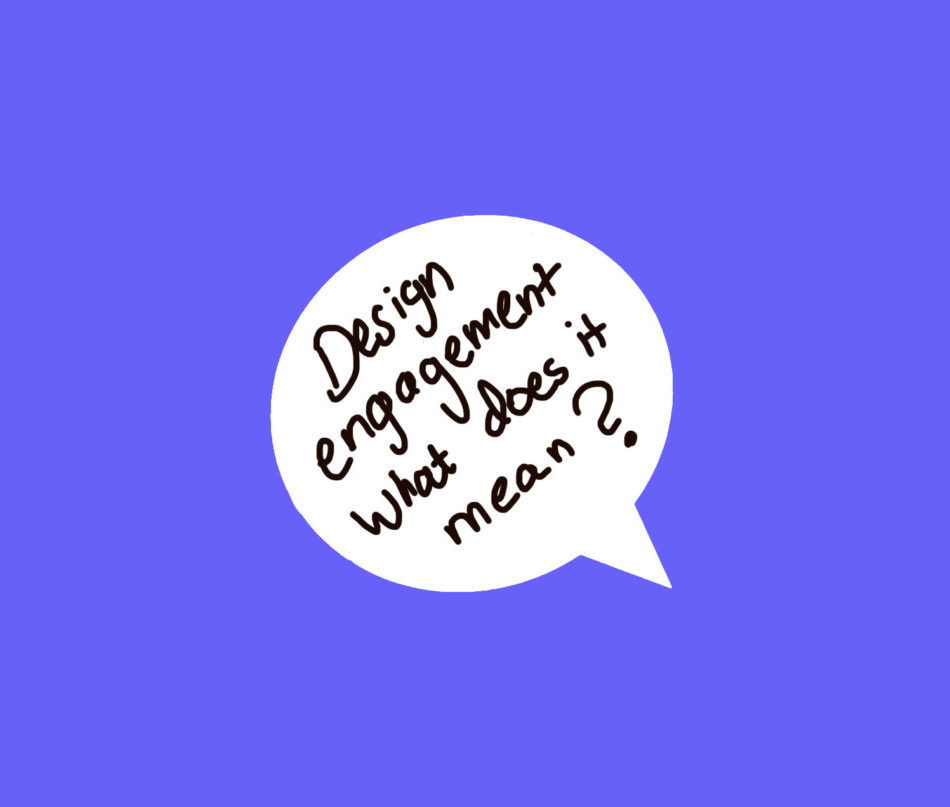Written by:
(16 April 2021)
Design Engagement – What does it mean? was a Glass-House Chat session aimed at unpicking people’s perceptions of design engagement in placemaking and exploring ways to effectively integrate it into development and regeneration. We were joined by a range of participants, from practice and research, from different parts of the UK and even welcomed one participant joining from India. We began with the recognition that both the words design and engagement are loaded terms, which carry with them complex interpretations and connotations, and that when combined to form a new term, there was the risk of it feeling even more jargonistic.
Setting some definitions
For the purposes of providing a starting point for the conversation, we set out what we at The Glass-House see as our three key types of design engagement:
- introducing people to design and how it can influence and improve our lives
- empowering people to participate in or lead a design process
- empowering people more broadly through their engagement in a design process
We then asked participants in the chat to share what they felt were key words and interpretations and terms such as community-led, collaboration, co-production, bottom-up, voice and agency were thrown into the mix to get us going.
Key themes
Discussion flowed and took us into various avenues, but some key themes began to emerge. As in previous Chats, the question of agency emerged, as we explored the role of design engagement both in empowering people to take part in a creative design process, and as a means of creating the conditions for a greater sense of agency to be active citizens. We also talked about the role of design engagement as a connector, helping us bring the design team together with local expertise and assets, as well as a means of building local networks,greater connectivity and cohesion within communities. This led to a conversation about the distinction between the outputs and outcomes of design engagement, and how social value sits alongside built outcomes.
Enabling agency and creativity
Collaborative placemaking invites people into a creative process to shape a shared local environment. However, sometimes people need to be reassured that they have a role to play, and given alternative points of entry into a design process.
Artists and the cultural sector can play an important role in helping to kick-start that dialogue by creating spaces for interaction that use a range of creative activities to attract and engage people across generations and from diverse backgrounds. Artist-led initiatives can play a transformative role in an area, and thinking of the cultural sector not only as changemakers, but as enablers of design engagement, can open new doors to extending that sense of agency.
Design engagement as a connector
The theme of design engagement as a space for connection has recurred throughout the series. In this Chat, with a focus on design engagement, the notion of connection felt more relevant than ever as a route into discourse between people with different interests. We spoke of placeshaping as a space to collaborate across generations and cultures, and as a safe space to explore conflicting needs and interests as well as unearth what we have in common and to build on the values and ambitions we share. Place is a route into discourse about practically any aspect of our lives, and we should be more aware of the potential of design engagement to work together on exploring and shaping much more than just our built environment.
We also talked about the importance of involving not only young people, but also younger children in this dialogue. Children and young people are not only those who will inherit the places we shape now in the future, they are also users of these places today and have the right to be engaged in the conversation. Children and young people not only have the right to take part, they also have a lot to offer as active citizens.
With three architects involved in this Chat, we talked about the importance of creating opportunities for those engaging with design processes to build relationships and networks with each other, as well as developing spaces to create that important link between the design team and local knowledge. For a designer, understanding the local context is absolutely crucial to their process and if done well, engagement can be a powerful source of insight as well as creative input into the design process.
Outputs and outcomes
When it comes to evaluating the success of design projects, we naturally look at the built outputs and if assessing the outcomes, consider the impact that these buildings and spaces have had on the economic, social and cultural life of an area. Outcomes, and social value, are notoriously difficult to evaluate in placemaking, as they emerge over an extended period of time and at multiple scales.
One of the interesting aspects of this conversation was focused around the outcomes associated with design processes that may or not actually lead to a built product. We discussed the empowerment and social value opportunities that come with simply taking part in a dialogue about your area, and the creative journey of identifying opportunities for change, generating ideas and testing iterations of them through design and prototyping. One Chat participant spoke of the need to give ourselves permission to experiment and to make mistakes, to be generous with each other. Through conversation, we explored this as both an ingredient of successful design engagement, and an opportunity that design engagement can offer to create those spaces for shared experimentation.
There is no doubt that design engagement offers a spectrum of opportunities. We must challenge ourselves to think outside the box to consider its potential as a force for good.
You can book on for our May, June and July Glass-House Chats below.
May: Digitising Design Engagement
June: Building Design Engagement Capacity in Local Authorities

